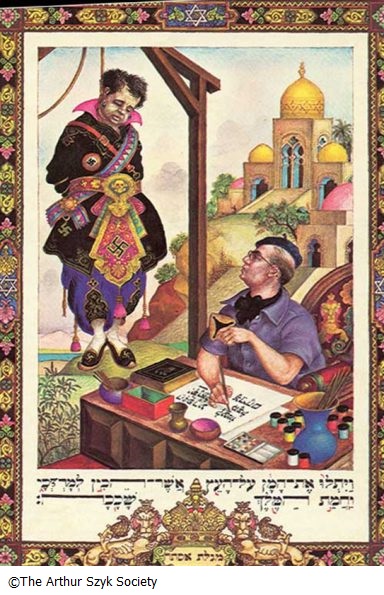The Zohar compares Yom Kippur to Purim, stating that Yom HaKipurim (as Yom Kippur is called in the Torah) may be interpreted as “a day like Purim” (k-purim means “like Purim”). On Purim, we feast; on Yom Kippur, we fast—what can the two have in common? Indeed, Purim and Yom Kippur have something very important in common. Both days share a common root—pur—meaning a “lot” (or pl. purim—“lots”). On Yom Kippur, two lots were placed in a wooden box—one said “to G‑d,” and the other “to Azazel.” (See my post, “Tale of Entangled Goats”). The High Priest relied on a lottery to choose which goat would be used for a sacrifice to G‑d and which to atone for the sins of the Jewish People. On Purim, Haman threw two lots to determine the month and the day of a pogrom that was going to solve the “Jewish Problem” once and for all. What is this about lotteries?
Last year, in a post “Purim: celebrating randomness,” based on maamarim (Chasidic discourses) of the Lubavitcher Rebbe, I explained that Haman used a lottery to reach a very high spiritual level where there is no difference between Jacob and Esau. Indeed, he reached that level only to find out (in a rather painful way) that even on that level, G‑d chooses Jacob. Indeed, there is a spiritual level so sublime, where there is no difference between good and bad, light and darkness, Jacob and Esau. Where did Haman go wrong in his calculations?
As I explained last year in the post, The Entangled Twins, symmetry breaking plays a very important role in quantum field theory and the Standard Model. In a particular type of symmetry breaking, called spontaneous symmetry breaking, the underlying laws remain unchanged under symmetry transformation, but the resulting system is asymmetrical. This could happen when an equation representing the law of physics yields two solutions that are equally valid, but nature chooses one of them. A simple example of such an equation would be 2x = 1. This equation has two solutions: x=1 and x=-1. If nature chooses one of these solutions, say, x = 1, this is a spontaneous symmetry breaking. It is spontaneous symmetry breaking that is responsible for the Higgs mechanism and Higgs Boson—the so-called “G‑d Particle”—that endows particles with mass.
This is what Haman did not understand. Even at the highest level, where there is a complete symmetry between Jacob and Esau, G‑d chooses Jacob—a spiritual example of the spontaneous symmetry breaking:
I loved you, said the Lord, and you said, “How have You loved us?” Was not Esau a brother to Jacob? says the Lord. And I loved Jacob. And I hated Esau…
Malachi I, 2-3
Haman failed the test on quantum field theory and ended up hanging on a gallows. This is the story of Purim from a quantum physics perspective.


Leave A Comment